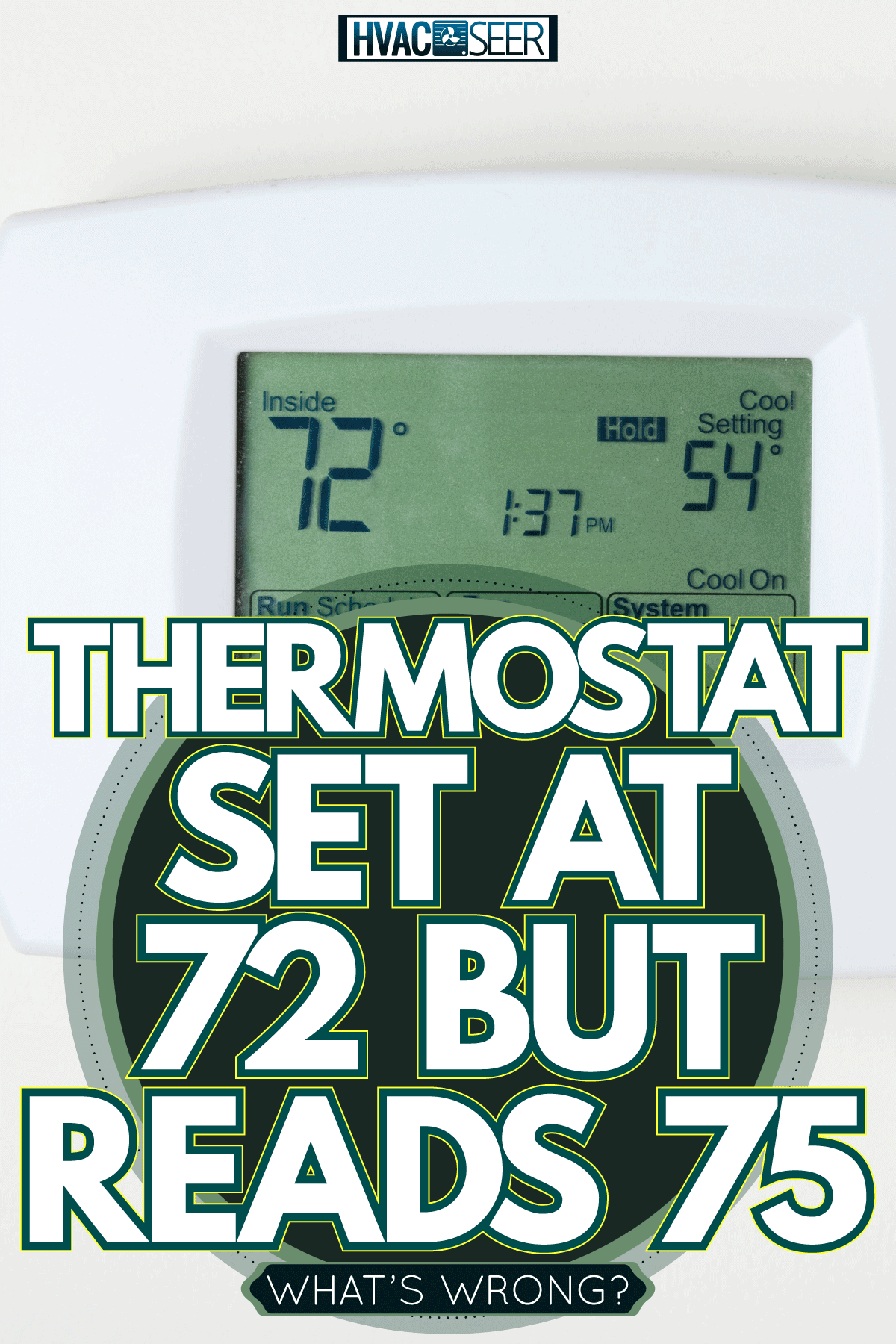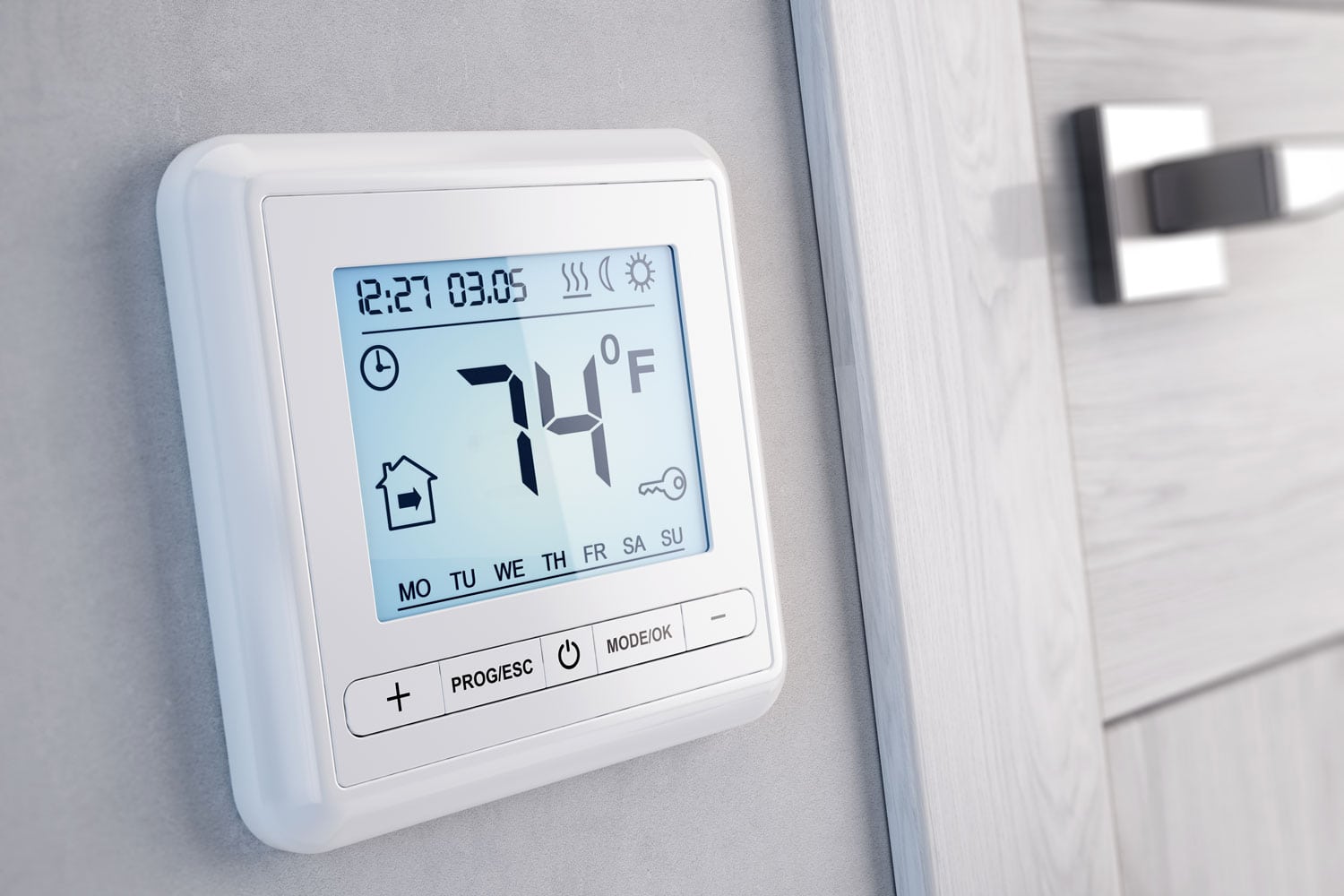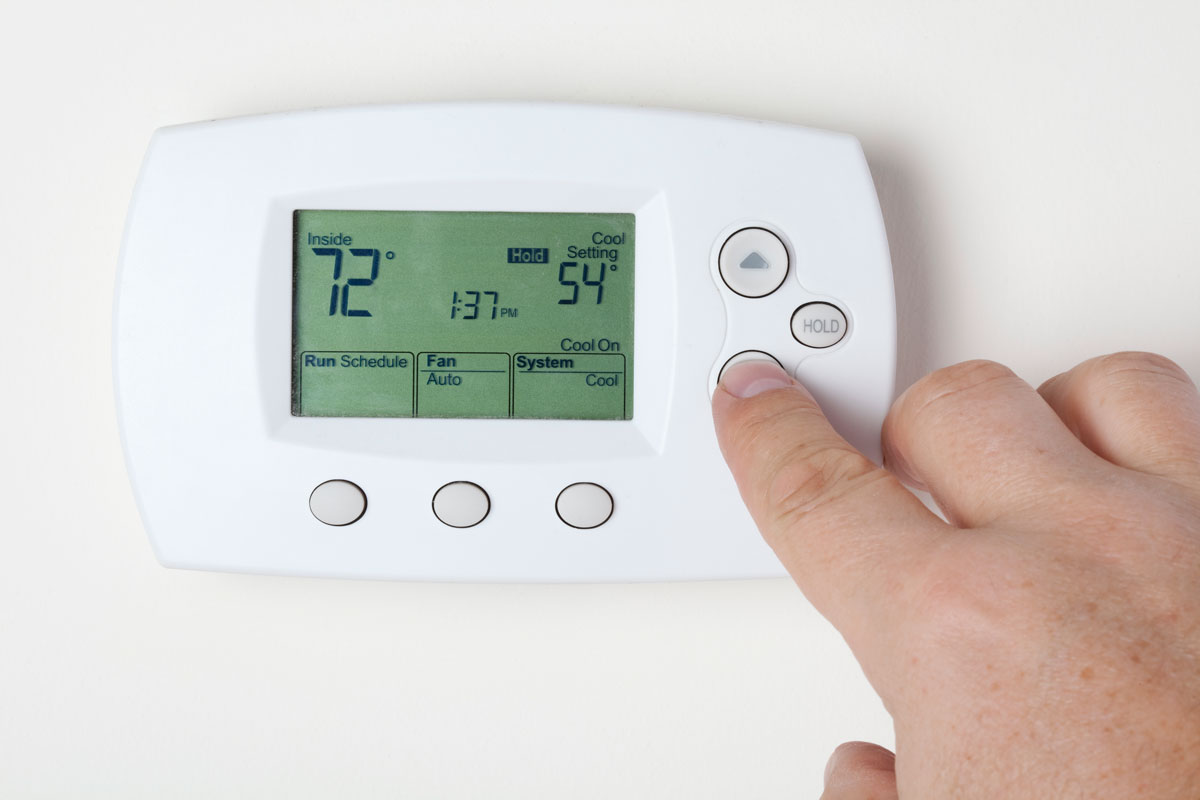It's getting warm outside, so you go and adjust your thermostat. A temperature of 72 degrees Fahrenheit makes your home comfortable during the summer. However, your thermostat reads 75 degrees. It raises the question, what's causing the problem? If that's your concern, we have some answers!
There are several reasons your thermostat could be giving you an incorrect reading. The problem can be as small as extreme outside weather.
However, it can also be concerning problems like leaking air ducts. Otherwise, it could be the thermostat itself that needs repair.
You can't always rely on technology. There's something that can go wrong at any moment. Sometimes it happens without any cause! To fix your thermostat problem, you'll need to troubleshoot it step-by-step. To learn more, keep reading.

How To Troubleshoot A Thermostat
Since there are several reasons for an incorrect thermostat reading, you need to narrow down the problem. You can start by checking the weather outside.
So, the question you have to answer is, how hot is it?

If you're experiencing unusual weather, your HVAC system may be trying its hardest to bring the temperature down at home. However, since the temperature outside is too high, it's unable to bring the temperature down to 72 degrees Fahrenheit.
In this case, the readings should return to normal once the heat wave passes. If you're experiencing regular weather, it's time to inspect the HVAC system and the thermostat.
We'll start troubleshooting the simple components first:
Inspect Your Thermostat
Thermostats give you readings with the help of a sensor. So, once it starts giving you incorrect details, it might be a problem with a defective or damaged sensor.
There's an easy way to tell when this is the case. You'll need to check the indoor temperature with a separate thermometer.
If the thermometer gives you a different reading, it indicates that the sensor is malfunctioning.
Unfortunately, the solution to this problem would be to replace the whole thermostat. There are two types of thermostats, electromechanical and electronic. Each one uses a different sensor.
Of course, they also have a unique installation method. So, it isn't easy to DIY. Therefore, it's better to purchase a new thermostat outright.
Check The Battery Life
Sometimes problems occur because of a lack of power. Many thermostats use batteries. If it's running low on battery, it's prone to give you errors.
Thermostats will usually give you a low battery indicator. Of course, it indicates it needs a new set of them. However, people are prone to procrastinate.
Thermostats will work for one or two months after the low battery indicator. So, if you've held off on changing them, the thermostat is operating on limited power and time.
Change the batteries and see if that corrects your thermostat readings.
Check The Power Source
Thermostats can also draw power from the home's electrical system. Instead of batteries, you'll need to check the power source. Look for blown fuses or tripped breakers.
If this is your problem, call an electrician to fix the issue. Your thermostat should give you the correct readings after fixing the electrical problem.
Thermostat Location
As mentioned, thermostats use sensors to know when they should send your HVAC system a signal. So, its position matters. Outside sources can affect the readings.
If it's receiving a lot of sunlight, it might read a higher temperature. The same is true in the opposite case. If you place it in a cold area, it will read a lower temperature than the setting.
It's essential to place your thermostat in a good area of your home. This way, it's not under excessive heat or cold exposure.
If this might be your issue, call an HVAC technician to move your thermostat to another location. Otherwise, you can move the thermostat yourself if you have the experience.
Inspect Your HVAC System
The thermostat isn't the only culprit. Many components make an HVAC system function. If one fails, the whole system will in some capacity.
So, it might seem like an incorrect thermostat reading. However, it might be trying its hardest to reach that 72-degree temperature.
Some components that affect the performance of your HVAC system are the filter and the ductwork.
Check The Filter

Air passes by your HVAC system's filter. No matter the effectiveness, it traps airborne debris. If you don't know, it's essential to swap out your filter every three months.
Though, that depends on the season and your environment. In any case, maybe it has been some time since you've last changed the air filter. Forgetting to change has its downsides.
A clogged filter interferes with airflow. Therefore, your HVAC system will attempt to bring the temperature down to 72 degrees Fahrenheit.
However, it can't do that if not enough air passes through the filter. Change or wash your filter and see if the temperature reading goes down.
Leaky Ductwork

If the problem persists, there might be an issue with the ductwork. More specifically, there's air leaking somewhere in the system. However, mismatching thermostat readings are only part of the signs.
There are a few ways to tell it's a problem with the ductwork. The first sign would be an HVAC system that struggles to keep your home cool. Some rooms might never cool off.
As a result, your AC runs constantly. The consequence of that is a higher energy bill. Lastly, you also have to consider air quality. Has it gone done noticeably?
In other words, is there an increase in dust circulating in your home? Your HVAC system may also pick up fumes and debris from the outside. Thus, it affects air quality in other ways than spreading dust.
If you suspect problems with your ductwork, call an HVAC technician to check it out.
Check The AC Unit
The last area to check is the air conditioner. Problems can be as simple as a blockage near the condenser. This component is essential because it's in charge of collecting all the heat inside your home.
It also dumps that heat into the outdoor air. However, if something is blocking the condenser, it can't disperse the heat it collects. Instead, it will blow the heat back into your home.
It could be why your thermostat reading doesn't go below 75 degrees.
https://www.cooltoday.com/blog/why-is-my-air-conditioner-not-cooling-my-house-below-80-degrees
Go outside and make sure nothing is blocking the condenser's breathing area. Additionally, clean it if it looks anything like the photo above.
If you're curious to see the cleaning process, here's a YouTube video demonstrating it:
Refrigerant Leaks
In rare cases, you might be dealing with a refrigerant leak. It's a gas the AC uses to cool the air inside your home. If your AC runs low on it, it won't cool as effectively.
You can investigate this by going outside and checking your refrigerant lines. If ice is covering the wires, there's a refrigerant leak. Evaporator coils may also be frozen.
It's an issue you can't fix yourself. A professional will need to locate the leak and recharge your system.
How Long Do Thermostats Last?

Longevity is an aspect we consider when choosing a product. You want equipment to last. So, it's crucial to purchase a good thermostat.
However, thermostats don't necessarily have a lifespan. They aren't advanced pieces of equipment. Aside from battery replacement, there's not much you should do regarding maintenance.
In any case, you can expect thermostats to last around ten years. It can last even longer than that. But, equipment tends to get worse with age. Parts will wear down regardless of how well you take care of them.
After ten years, it's time to consider changing thermostats. Though, that's only if the current one you own starts malfunctioning.
How Do You Know If A Thermostat Is Working Properly?
Batteries and sensors might be the least of your worries. Sometimes, the whole thermostat is the problem. There are a few ways to tell when it's starting to malfunction.
It's all related to how it responds to your input. A thermostat in good working order should react immediately to any changes you make.
If your thermostat takes longer than two minutes to respond to changes, the thermostat isn't working correctly.
Malfunctioning thermostats also won't be able to turn on the AC or furnace. It turns these appliances on by sending a signal through electrical wires. Thermostats fail to send the signal when the wiring fails.
It's also a problem in the opposite case. Maybe you're trying to turn off the AC or furnace. So, you press the OFF button. However, the furnace or AC keeps running.
This issue comes from faulty wiring or incorrect calibration. If this describes your situation, consider replacing your thermostat.
How Much Does It Cost To Replace A Thermostat?
The cost to replace a thermostat depends on your area. However, you can expect to pay around $80-$200 for labor costs. The thermostat and installation will cost $140-$350.
All-in-all, it can cost around $200-$400 for everything.
Our Final Takeaway

As you can see, problems with thermostat readings can be small or concerning. It might be the thermostat itself that's malfunctioning. Otherwise, it's the HVAC system. Hopefully, your issue is as simple as a battery replacement.
Before you go, did you install a thermostat in an area with tons of sun exposure? We can give you tips on blocking the sunlight! For more information, check out:
How To Block Sun From Thermostat?
Are you replacing the thermostat batteries? We have information on how long they can last. To learn more, check out:
